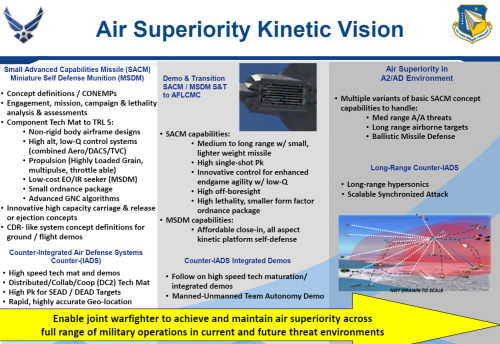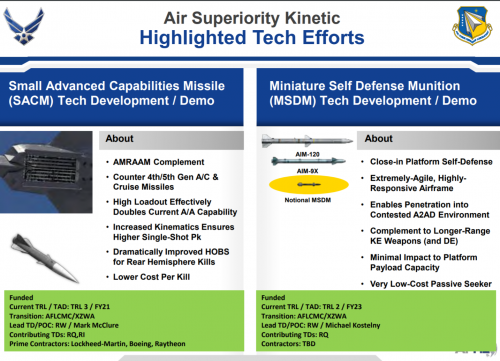Dragon029
ACCESS: Top Secret
- Joined
- 17 March 2009
- Messages
- 882
- Reaction score
- 430
I think the EW mission can probably be integrated and still be exportable; the F-35 has a pretty serious EW suite and it's going to see widespread use.NeilChapman said:Thanks D! That was a helpful explanation. I understand your explanation and see the value in going back to destroy radars that pop up behind you. If I send in something like the MALD-J and radar sites light up which is turn plotted by B-21, PCA or some other high flying, stealthy asset, do I need to go back and eliminate the threat? Are hypersonic weapons 1000 mi out a possible alternative?
If the EW mission is not integrated into this airframe would it be exportable?
As for the first part, you can definitely use decoys and drones to try and locate SAMs like Wild Weasel aircraft, but if an enemy is smart and if they have a decently sized IADS (remembering we're talking about an enemy we're willing to send B-21s and PCAs against) they're not going to show their hand all at once / not within the first few hours or days. SAMs might lay in wait, camouflaged and only start firing when they receive information that some contacts (which they know may or may not be decoys) are actually dropping bombs, at which point the stealth aircraft may find themselves with radars radiating at them from all sides. SAMs that were in other locations previously may also be ordered to hurry over and try and fill the gap in their air defences while (known to them or not) the B-21s and PCAs are operating behind their lines.
From what I've read, the intent is that F-35s and potentially other aircraft will be working to ensure that these tunnels through enemy IADS don't close up (ie, they'll be on SEAD / DEAD duty, working around and in the trail of these B-21s, etc), but it's certainly possible that the F-35s are too busy, or that intelligence underestimates the forces in that area, meaning there are no F-35s there, or that the F-35s are too far away due to poor timing / mission planning.
Hypersonic weapons launched from 1000nmi (or closer) could work to take out those pop-up threats, but you do ideally still want something stealthy to get EO/IR (and ideally GMTI as well for safe measure) eyes on the SAM, that way it can't just escape into the night once it stops radiating - a Mach 5 cruise missile will still take a little over 20 minutes to reach a target 1000nmi away, plus there's the additional time spend detecting, identifying and locating the threat. A 1000nmi hypersonic cruise missile with sufficiently advanced terminal guidance probably isn't going to be that cheap too, so you want to be pretty certain that you're not firing at an inflatable decoy with an emitter.
This all largely focuses on air-to-ground too; as others have said, the PCA is being designed to China in mind; long range cruise missiles might be effective against SAMs, but they're not going to be very effective against aircraft. The J-20 in particular need a strong counter and while the F-22 and F-35 should generally hold an advantage, they will be bound by tanker support that can be threatened by the same J-20 combined with PL-15s, etc missiles. As already mentioned, giving these aircraft AETP engines will give them a pretty good combat radius, but being able to achieve or exceed those ranges while incorporating supercruise or afterburner will be important if you're detecting threats like the J-20 from only maybe 50-100nmi (placing it maybe only 100-150nmi from the B-21) and you want to engage the enemy while pushing the fight away from the B-21, potentially by supercruising away from the B-21 and engaging the J-20 from another angle, or just rushing up to it and forcing it to go on the defensive while the bomber slips away.
Ultimately though, I guess we'll just have to wait and see what the USAF believes is needed.


